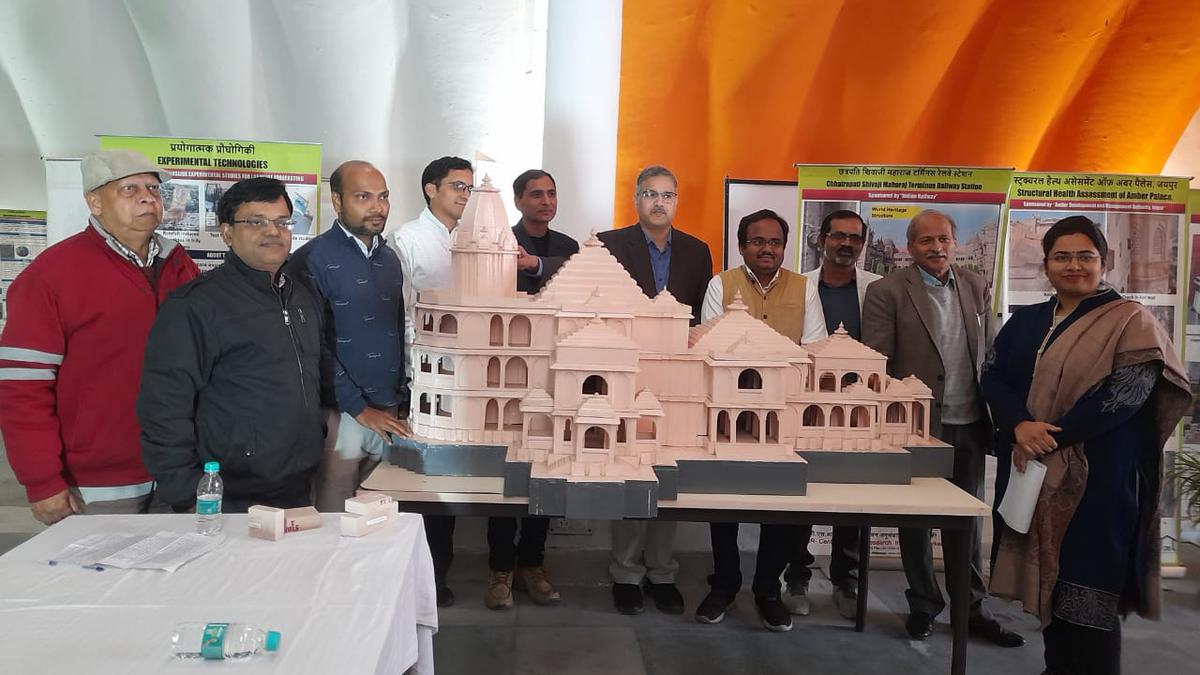
Hyderabad Old City’s link with Ram Temple in Ayodhya
The Hindu
The Ram Temple in Ayodhya undergoes a '2,500-year return period' test to ensure seismic resilience, led by an engineer from Hyderabad.
As parts of the country shift to a celebratory mode for the grand opening of the Ram Temple in Ayodhya on January 22, not many are unaware that a ‘2,500-year return period’ test was carried out to ensure that the temple structure can withstand the biggest earthquake that happens once in 2,500 years.
The team behind that test and also the health monitoring of the massive structure and retaining walls is headed by an engineer from the Old City of Hyderabad. Pradeep Kumar Ramancharla as the director of the CSIR-Central Building Research Institute (CSIR-CBRI) in Roorkee, Uttarakhand, has been responsible for the 3D structural analysis and seismic resilience of the project.
“We have adopted similar tests that are done for nuclear projects on withstanding seismic pressures. A 2,500 year return period is a specific term used to describe an earthquake that comes once in 2,500 years,” Mr.Pradeep Kumar told The Hindu. Former CBRI director N. Gopalakrishnan guided with his expertise, with the present team conducting Multi-Channel Analysis of Surface Waves and Electrical Resistivity Tomography for seismic resilience.
The biggest challenge was ensuring the interlocking system as the entire structure is made of stone. Each column is in three to four parts and they had to be interlocked without any steel, said Mr.Pradeep Kumar, who completed his schooling from Mufeed-Ul-Anam School in the Old City and obtained a diploma from Quli Qutub Shah Polytechnic in the area.
He says the CSIR-CBRI also designed the Surya Tilak mechanism in such a way that the sun rays fall on the forehead of Lord Ram’s Idol at 12 noon on the occasion of Sriram Navami every year, for about six minutes. “Gearbox and reflective mirrors have been arranged in such a manner that sun rays from the third floor near Shikara will be brought to Garbha Griha using well-known principles of tracking sun’s path,” said Mr.Pradeep Kumar, who completed his engineering from Vasavi College of Engineering in Hyderabad and went to complete his Ph.D from Japan.
Hyderabad’s other connection to the temple is the city-based Anuradha Timber that has built around 18 wooden doors for the temple so far.

After a long, tiring day all we want is to jump right on our cosy beds and rest comfortably on our soft, fluffy pillows, right? Pillows are not quite appreciated as much as electric cars or air-fryers, for instance. Pillows are a wonderful man-made creation that has improved the lives and sleep of people across the globe. Did you know ages ago people used to rest their heads on a HARD ROCK? So how did humans go from sleeping on stones to cosy, fluffy and soft pillows today? Let’s get into the origin of your everyday pillows!

As the November 30 deadline nears for installing vehicle location tracking devices (VLTD) and emergency panic buttons in public service and nationally permitted goods vehicles in Karnataka, transport unions representing cab, bus, and truck operators are urging the government to reconsider the mandate. They argue that the high cost of these devices and a lack of awareness have made it difficult for many vehicle owners to comply with the requirement.









